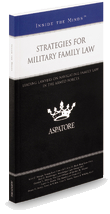On behalf of Stange Law Firm, PC posted in Child Custody on Friday, December 4, 2015.
The laws in Missouri governing divorce, paternity, child custody and child support can be difficult and confusing for non-attorneys. Statues are written in a very unnatural fashion, which can make them unclear. The situation may be made even more complex by the tendency to define a term or conduct by reference to another section of the Missouri Revised Statues.
For instance, in section 452.375(2)(6), which deals with the factors a court should consider when determining what is in the best interests of the child, it mentions “domestic violence” and specifies that term is defined in section 455.010.
And of course, Section 452.375 consists of more than 1,800 words in 13 subsections and sub-subsections. This is why court decisions often require pages of discussion. One statutory section may force a judge to consult dozens of other sections of statues and many other cases by courts interpreting those sections.
Another element that can make them confusing is that they are often written in the negative, not ordering any particular conduct, but stating, that which cannot be done.
In the custody context, the legislature instructs courts “As between the parents of a child, no preference may be given to either parent in the awarding of custody because of that parent’s age, sex, or financial status, nor because of the age or sex of the child.”
This tells the judge criteria that they cannot use when ordering custody, and provides grounds for an appeal if, for instance, a judge ignores that instructions and makes a finding that because the couple had young daughters, custody would go to the mother.
This would be a clear violation of the father’s rights, and this section would support his appeal of such a custody determination.
These statutes are available online from the State of Missouri, and if you are brave, you can attempt to navigate them on your own. If you have questions, asking your attorney to help with your understanding is probably a better use of your time, as they explain how the sections work together and how a court is likely to apply them to your situation.



